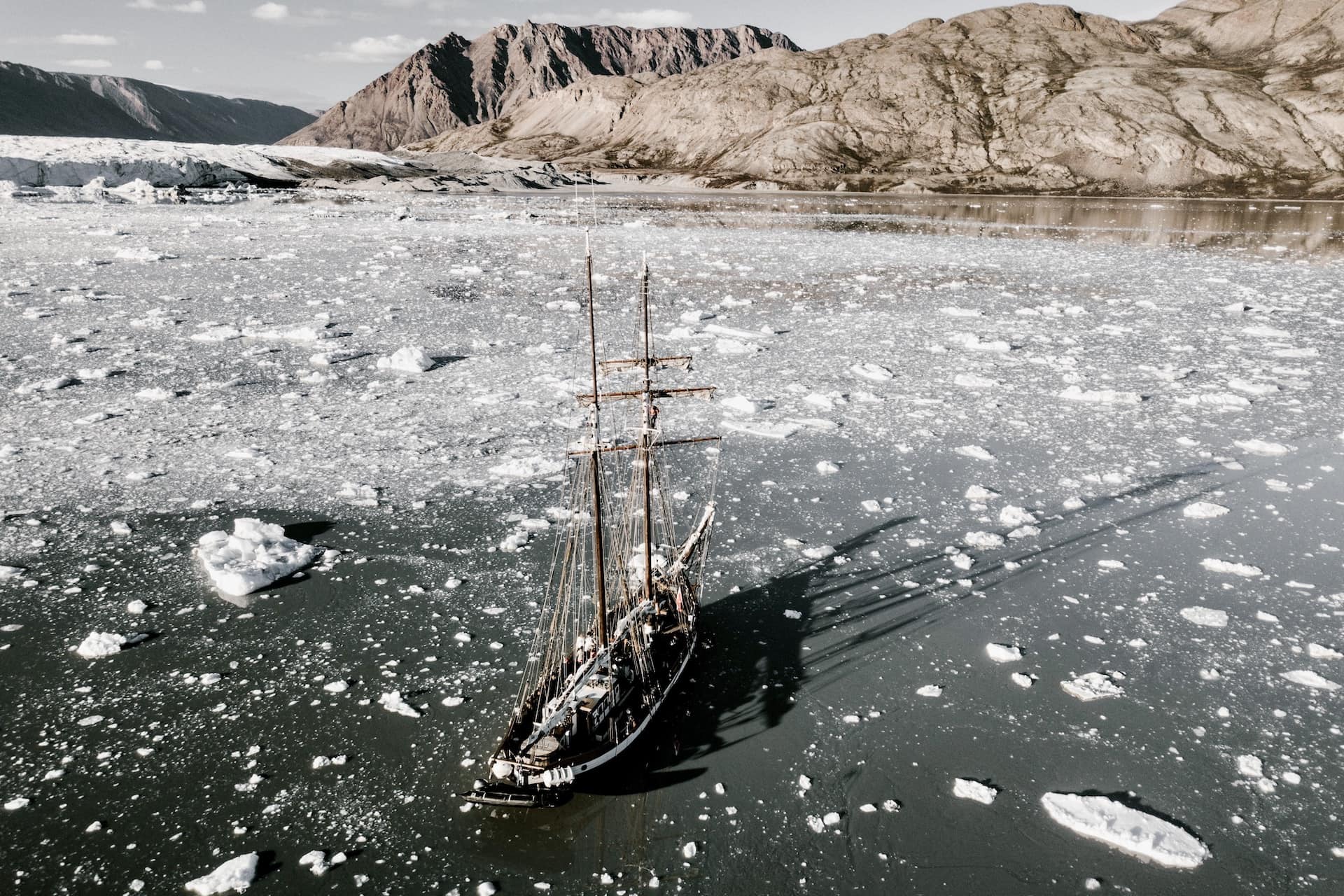
The Largest National Parks in the World That Are Bigger Than a Country
Have you ever wondered how big the largest national parks in the world are? How about this: some of them are so huge that they are even bigger than a country! That’s right, there are national parks that cover more land or water than some of the smallest nations on Earth. How amazing is that?
National parks are areas of natural beauty and biodiversity that are protected by law for the benefit of people and wildlife. They have a long and fascinating history, dating back to the 19th century, when the first national park, Yellowstone, was established in the USA. Since then, many countries have followed suit and created their own national parks, with different purposes, benefits, and challenges.
In this article, we will present you a list of the largest national parks in each continent that are even bigger than a country. We will also explain why they are worth visiting and protecting, and what you can do to help them. If you love nature and adventure, you will definitely enjoy this article.
The 7 World’s Largest National Parks in Each Continent
Below are the world’s largest national parks in each continent. The list serves as a suggestion for your upcoming trips.
1. Northeast Greenland National Park – North America
The largest national park in North America is also the largest land national park in the world. It is Northeast Greenland National Park, which covers a staggering 972,000 square kilometers of Greenland’s northeastern region. That’s larger than Egypt or Tanzania, two of the biggest countries in Africa. In other words, the national park is larger than about 170 countries in the world!
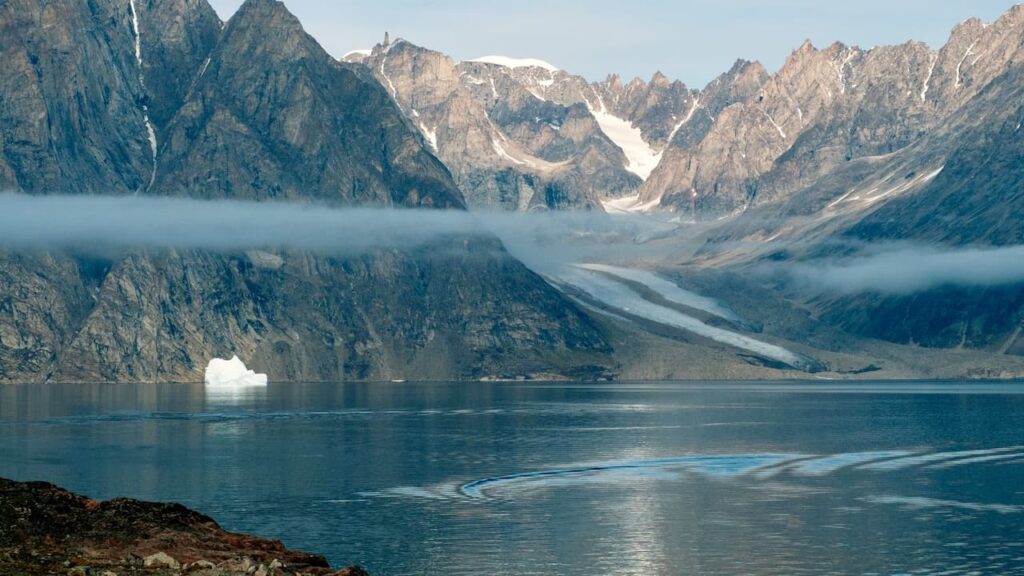
1.1. Landscape and Climate
Northeast Greenland National Park is a vast and remote wilderness that offers stunning scenery and diverse wildlife. The park features mountains, glaciers, fjords, icebergs, and tundra. The climate is harsh and cold, with temperatures ranging from -40°C in winter to 10°C in summer. The park is mostly uninhabited, except for a few small settlements and research stations.
1.2. Wildlife and Attractions
Being one of the largest national parks in the world, Northeast Greenland National Park is home to many animals that have adapted to extreme conditions, such as musk oxen, polar bears, walrus, narwhals, and Arctic foxes. The park also hosts many migratory birds in summer, such as geese, ducks, and terns. Definitely, the park is a paradise for nature lovers and adventurers who seek solitude and challenge.
1.3. Challenges and Threats
However, the Northeast Greenland National Park also faces some threats and challenges, such as climate change, pollution, illegal hunting, and tourism.
- Climate change is affecting the park’s ecosystem by melting the ice and changing the weather patterns.
- Pollution from nearby activities, such as mining and fishing, is contaminating the park’s water and air.
- Illegal hunting of endangered species, such as polar bears and walrus, is reducing their population and threatening their survival.
- Tourism is increasing the demand for infrastructure and services, which can disturb the park’s natural balance and beauty.
2. Chiribiquete National Park – South America
The largest national park in South America is Chiribiquete National Park. It covers 43,000 square kilometers of the Colombian Amazon. That’s larger than Switzerland or Denmark, two of the smallest countries in Europe!
Chiribiquete National Park is located in the departments of Caquetá and Guaviare, in the northwest of the Colombian Amazon. It is in the jurisdictions of the municipalities of Solano, Cartagena del Chairá, and San Vicente del Caguán in Caquetá, and Calamar and San José del Guaviare in Guaviare. It is bordered by the Tunia River (Macaya River) in the northeast, which forms the Apaporís River after its confluence with the Ajaju River at a point called Dos Ríos.
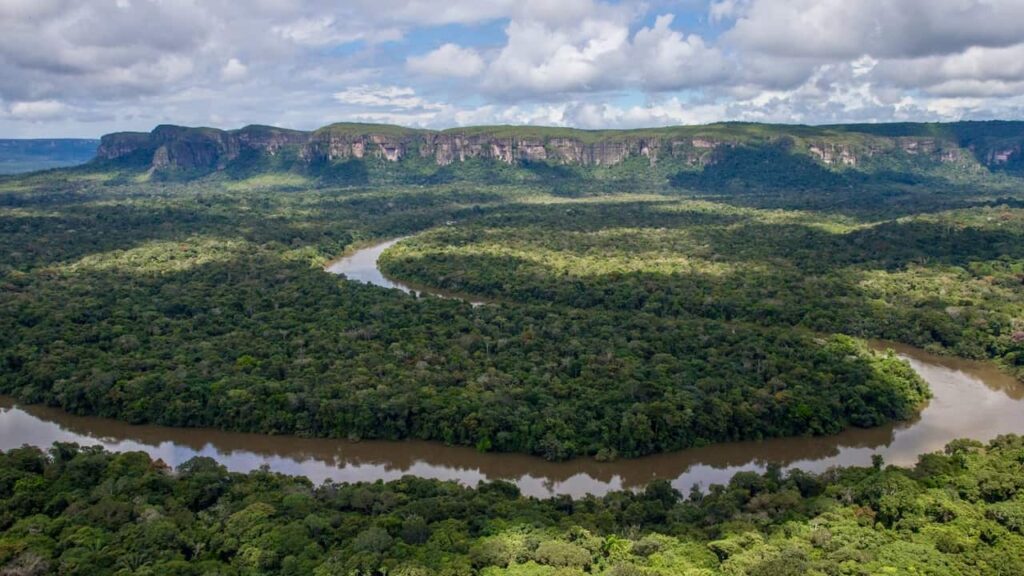
2.1. Landscape and Climate
Chiribiquete National Park is a confluence point of four biogeographical provinces: Amazon, Andes, Orinoco, and Guyana. As such, the park guarantees the connectivity and preservation of the biodiversity of these provinces, constituting itself as an interaction scenario in which flora and fauna diversity and endemism have flourished.
One of the most impressive defining features of Chiribiquete is the presence of tepuis. They are table-top mountains that are found only in the Guiana Shield. The tepuis in Chiribiquete are smaller than those in other parts of the Shield. However, they still create a dramatic contrast with the surrounding lowlands, which are covered by tropical moist forests, savannas, and rivers.
The climate of Chiribiquete is humid and warm, with an average annual temperature of 24°C and an average annual precipitation of 3,000 mm. The park has two rainy seasons (April-June and September-November) and two dry seasons (December-March and July-August).
2.2. Wildlife and Attractions
The park is incredibly biodiverse and hosts a diverse array of rock art. Indeed, it has more than 3,000 plant species, 492 bird species, 209 mammal species, 71 reptile species, 58 amphibian species, and 492 fish species. Some of the most notable animals in the park are the jaguar, the giant otter, the tapir, the woolly monkey, the harpy eagle, and the macaw.
The park also has more than 75,000 rock paintings that have been made by indigenous people on the walls of 60 rock shelters at the foot of Tepuis. The paintings depict hunting scenes, battles, dances, and ceremonies, all of which are linked to a cult of the jaguar, seen as a symbol of power and fertility. The paintings date back to 20,000 BCE and are still made nowadays by the uncontacted peoples protected by the park. Especially, the park is a UNESCO World Heritage Site that contains one of the largest collections of rock art in the world.
2.3. Challenges and Threats
The park faces some challenges and threats that could jeopardize its integrity and conservation. Some of them are deforestation, mining, drug trafficking, armed conflict, illegal hunting, and tourism.
- Deforestation is a result of agricultural expansion, cattle ranching, logging, and road construction.
- Mining is driven by the demand for gold, coltan, uranium, and other minerals.
- Drug trafficking is related to the cultivation of coca plants and poppy fields.
- Armed conflict is fueled by the presence of guerrilla groups and paramilitary forces.
- Illegal hunting is motivated by the trade of bushmeat and animal parts.
- Tourism is increasing the pressure for infrastructure development and access to remote areas.
3. Sanjiangyuan National Park – Asia
The largest national park in Asia is Sanjiangyuan National Park, which covers 123,100 square kilometers of the Tibetan Plateau in Qinghai Province, China. That’s slightly smaller than England. Nevertheless, it’s still larger than about 93 countries in the world, including Greece, Bangladesh, North Korea, Portugal, Hungary, Jordan, and many others. Very impressive!
Sanjiangyuan National Park is named after the source of three major rivers of Asia: the Yellow, the Yangtze, and the Mekong. These rivers provide freshwater to a billion people across Asia, as well as the ecosystems upon which they depend. The park encompasses a colossal chunk of the Tibetan Plateau, which is the highest and largest plateau in the world.
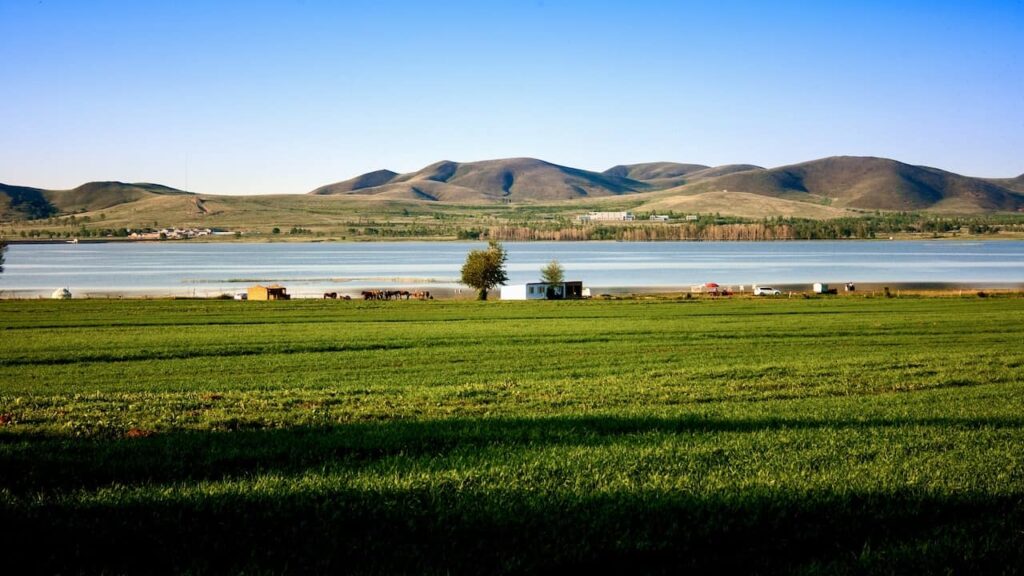
3.1. Landscape and Climate
Sanjiangyuan National Park is a confluence point of four biogeographical provinces: Amazon, Andes, Orinoco, and Guyana. As such, the park guarantees the connectivity and preservation of the biodiversity of these provinces, constituting itself as an interaction scenario in which flora and fauna diversity and endemism have flourished.
The park features a variety of landscapes, from alpine mountains to high-altitude wetlands, lakes, and grasslands. The park has an average elevation of over 4,000 meters above sea level and contains some of the highest peaks in China. For example, the Geladandong (6,621 meters) and Anyemaqen (6,282 meters). The climate of the park is cold and dry, with an average annual temperature of -4°C and an average annual precipitation of 500 mm.
3.2. Wildlife and Attractions
The park is home to many wildlife species that have adapted to the harsh conditions. For example, the snow leopard, the Tibetan antelope, the wild yak, the black-necked crane, and the Tibetan wild ass. The park also hosts some endemic and vulnerable species, such as the Przewalski’s horse, the Tibetan gazelle, and the white-lipped deer. Surely, the park is a paradise for nature lovers and photographers who seek beauty and adventure.
Sanjiangyuan National Park also has some cultural and historical attractions, such as Buddhist temples, nomadic camps, and ancient tombs. The park preserves some traces of Tibetan culture and history that have been influenced by the natural environment. The park also showcases some examples of environmental protection and sustainable development that have been implemented by the local communities.
3.3. Challenges and Threats
Similar to other largest national parks in the world, Sanjiangyuan National Park faces some challenges and threats that could jeopardize its integrity and conservation. Some of them are climate change, mining, overgrazing, poaching, and tourism.
- Climate change is affecting the park’s ecosystem by melting the glaciers and permafrost, reducing the water supply, and causing desertification.
- Mining is driven by the demand for gold, copper, lithium, and other minerals that are abundant in the park.
- Overgrazing is caused by the increasing number of livestock that compete with wildlife for food and water.
- Poaching is happening by the trade of animal parts for traditional medicine or trophies.
- Tourism is increasing the pressure for infrastructure development and access to remote areas.
4. Munga-Thirri-Simpson Desert National Park – Oceania
The largest national park in Oceania is Munga-Thirri-Simpson Desert National Park, which covers 36,000 square kilometers of the Australian Outback. That’s larger than Belgium or Taiwan, two of the smallest countries in Europe and Asia, respectively!
Munga-Thirri-Simpson Desert National Park is located in the far north of South Australia, near its border with Queensland and the Northern Territory. It is part of the Simpson Desert, which spans across three states, and is one of the world’s best examples of parallel dunal deserts. The park is also linked to Chiribiquete National Park in Colombia, which is the largest national park in South America.
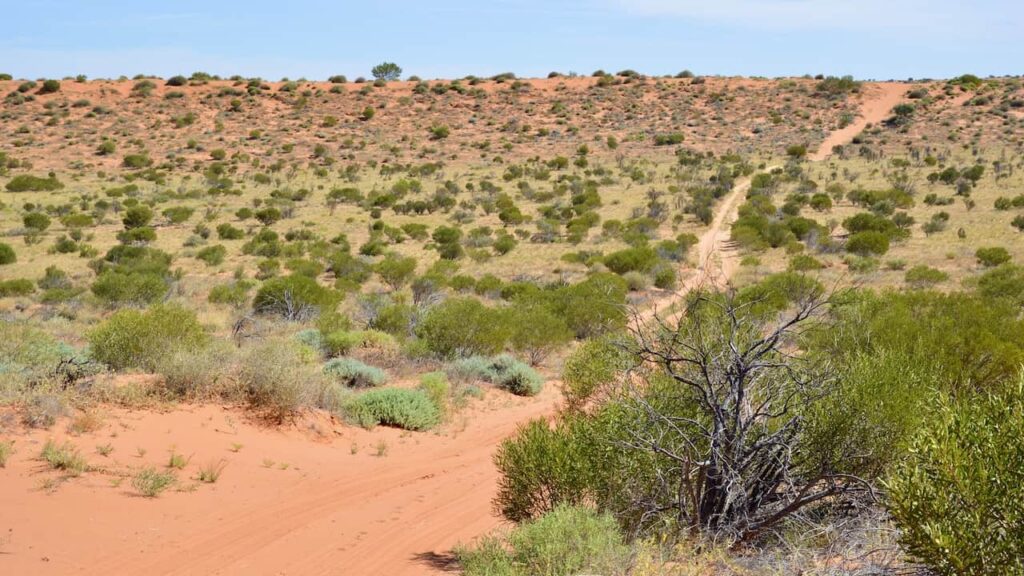
4.1. Landscape and Climate
Munga-Thirri-Simpson Desert National Park is a spectacular and remote wilderness that offers a challenging and rewarding experience for adventurous travelers. The park features sand dunes that stretch for hundreds of kilometers and reach up to 40 meters high. The park also includes clay pans, salt lakes, spinifex grasslands, and acacia woodlands.
The climate of the park is arid and hot, with an average annual temperature of 21°C and an average annual precipitation of 150 mm. The park has two seasons: summer (October-March) and winter (April-September). The summer season is extremely hot and dry, with temperatures reaching up to 50°C and no rain for months. The winter season is cooler and wetter, with temperatures dropping to 0°C and occasional thunderstorms.
4.2. Wildlife and Attractions
Munga-Thirri-Simpson Desert National Park is home to many wildlife species that have adapted to the harsh conditions, such as kangaroos, dingoes, camels, lizards, snakes, and birds. The park also hosts some rare and endangered species, such as the bilby, the mulgara, and the night parrot. Therefore, the park is a haven for birdwatchers, who can spot over 180 bird species in the park.
The park also has some cultural and historical attractions, such as Aboriginal rock art, explorer’s graves, and old homesteads. Indeed, the park is rich in Aboriginal heritage, as it is part of the traditional lands of the Wangkangurru-Yarluyandi people. The park’s name means “big sand hill” in their language. This national park also preserves some traces of European exploration and settlement. To elaborate, the graves of Charles Sturt and Cecil Madigan, who attempted to cross the desert in the 19th and 20th centuries.
4.3. Challenges and Threats
The park faces some challenges and threats that could affect its integrity and conservation. Some of them are climate change, invasive species, fire, mining, and tourism.
- Climate change is affecting the park’s ecosystem by increasing the temperature and evaporation rates, reducing the rainfall and vegetation cover, and altering the fire regimes.
- Invasive species compete with native wildlife for food and water, such as camels, rabbits, cats, and foxes.
- Fire is a natural phenomenon that can help regenerate vegetation. Yet, it can also be destructive if it occurs too frequently or intensely.
- Mining is a potential threat that could damage the park’s landscape and resources, as there are some mineral deposits in the area.
- Tourism is a positive activity that can help raise awareness and appreciation for the park. However, it can also pose some risks if it is not done responsibly and sustainably.
5. Namib Naukluft National Park – Africa
The largest national park in Africa is Namib Naukluft National Park, which covers 49,768 square kilometers of the Namibian coast and hinterland. That’s larger than Switzerland or Denmark, two of the smallest countries in Europe!
Namib Naukluft National Park is located in the west of Namibia, along the Atlantic Ocean. It stretches from the Kuiseb River in the north to the Orange River in the south. It encompasses part of the Namib Desert, which is considered the oldest desert in the world, as well as the Naukluft Mountains, which are part of the Great Escarpment.
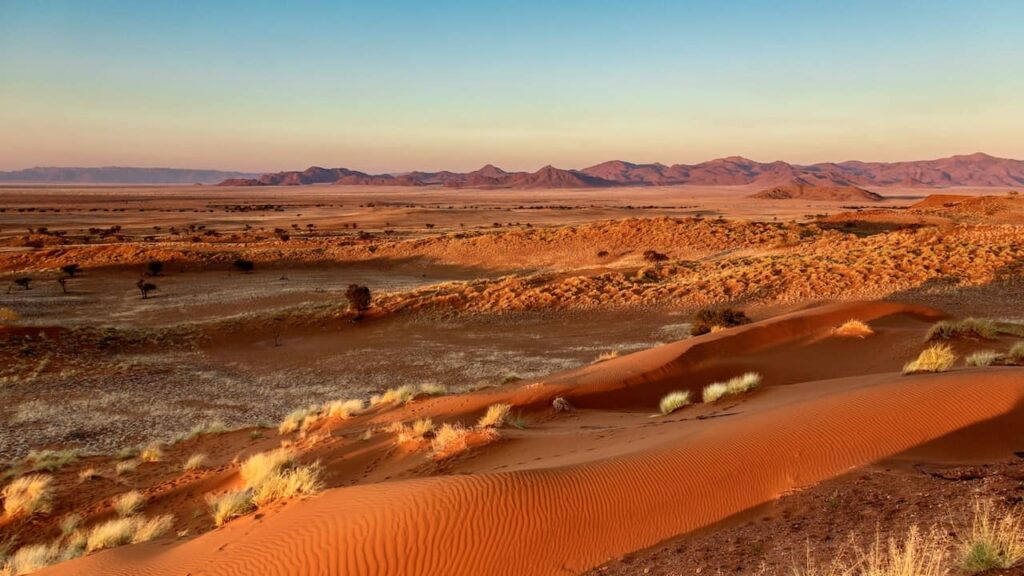
5.1. Landscape and Climate
Namib Naukluft National Park is a diverse and spectacular park that offers a variety of landscapes and attractions. The park features some of the world’s highest and biggest sand dunes, such as Dune 45, Big Daddy, and Elim Dune. Moreover, the park includes salt pans, such as Sossusvlei, Deadvlei, and Hiddenvlei, which are clay basins surrounded by dunes. The park also has mountains, canyons, waterfalls, geothermal areas, and glacial lagoons.
The climate of the park is arid and hot, with an average annual temperature of 20°C and an average annual precipitation of 100 mm. The park has two seasons: summer (November-April) and winter (May-October). The summer season is very hot and dry, with temperatures reaching up to 45°C and no rain for months. On the other hand, the winter season is cooler and wetter, with temperatures dropping to 5°C and occasional fog or rain.
5.2. Wildlife and Attractions
Namib Naukluft National Park is home to many wildlife species that have adapted to the harsh conditions, such as oryx, springbok, ostrich, zebra, giraffe, lion, leopard, cheetah, hyena, jackal, fox, and elephant. The park also hosts many bird species, such as flamingos, pelicans, eagles, vultures, and larks. Thus, the park is a paradise for nature lovers and photographers who seek beauty and adventure.
The park also has some cultural and historical attractions, such as rock art, shipwrecks, ghost towns, and monuments. Furthermore, the park preserves some traces of ancient civilizations that inhabited the area thousands of years ago. The park also showcases some remnants of European exploration and colonization that occurred in the past centuries.
5.3. Challenges and Threats
The park faces some challenges and threats that could affect its integrity and conservation. Some of them are climate change, mining, overexploitation, poaching, and tourism.
- Climate change is affecting the park’s ecosystem by increasing the temperature and evaporation rates, reducing the rainfall and vegetation cover, and altering the wind patterns.
- Mining is driven by the demand for diamonds, uranium, copper, and other minerals that are found in the park.
- Overexploitation is caused by the excessive use of water resources for agriculture and industry.
- Poaching is happening by the trade of animal parts for traditional medicine or trophies.
- Tourism is a positive activity that can help raise awareness and appreciation for the park. Nevertheless, it can also pose some risks if it is not done responsibly and sustainably.
6. Yugyd Va National Park – Europe
The largest national park in Europe is Yugyd Va National Park, which covers 18,917 square kilometers of the Komi Republic, a constituent republic of the Russian Federation. That’s larger than Slovenia or Israel, two of the smallest countries in Europe!
Yugyd Va National Park is located on the western slopes of the Polar Ural and Northern Ural mountains, on the border of Europe and Asia. The park is divided by glacial rivers, such as the Kozhim, Kosyu, Vangyr, Bolshaya Synya, Schugor, and Podcherem.
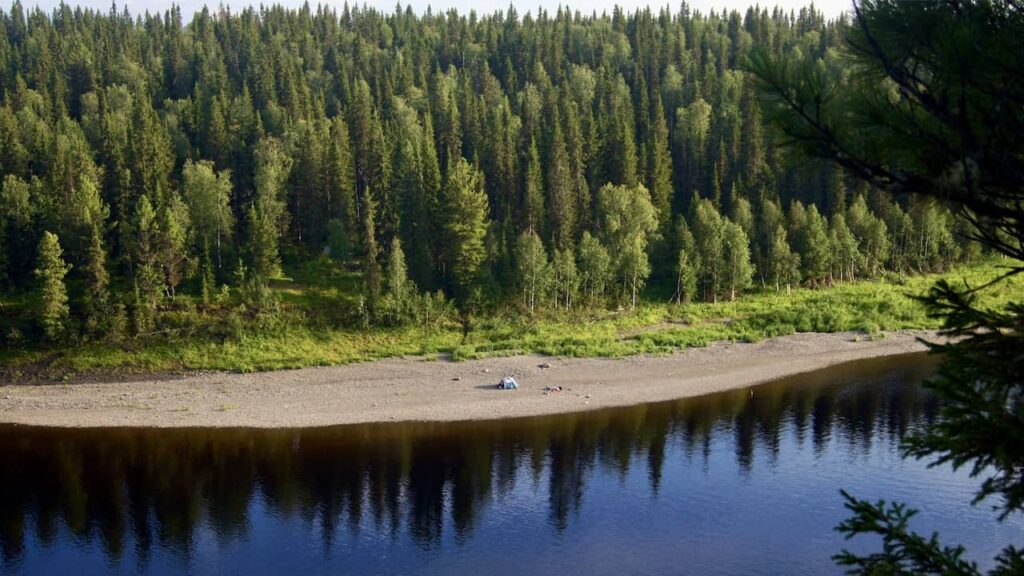
6.1. Landscape and Climate
Yugyd Va National Park is a diverse and spectacular park that offers a variety of landscapes and attractions. The park features steep mountain peaks, gentle hills, lowland taiga forests, alpine meadows, and tundra. The park has an average elevation of 500 meters above sea level and contains some of the highest peaks in the Ural Mountains. To illustrate, Mount Narodnaya (1,895 meters) and Mount Karpinsky (1,878 meters).
The climate of the park is continental, with cold winters and warm summers. The average annual temperature is about -4°C, ranging from -20°C in January to 12°C in July. The average annual precipitation is about 500 mm, mostly falling as snow.
6.2. Wildlife and Attractions
The park is home to many wildlife species that have adapted to the harsh conditions, such as the mountain hare, flying squirrel, reindeer, ermine, otter, moose, wolf, fox, wolverine, bear, pine marten, weasel, Arctic fox. More than 180 bird species live in the park. Hence, the park is a paradise for nature lovers and hikers who seek beauty and challenge.
Yugyd Va National Park has some cultural and historical attractions, such as rock paintings, monuments, and museums. The park preserves some traces of ancient civilizations that inhabited the area thousands of years ago, such as the Neolithic hunters and the Bronze Age metallurgists. The park also showcases some examples of Russian exploration and settlement that occurred in the past centuries. For example, the expeditions of Ivan Papanin and Georgy Sedov, who crossed the Ural Mountains by sleds and dogs.
6.3. Challenges and Threats
The park faces some challenges and threats that could affect its integrity and conservation. Some of them are climate change, logging, mining, poaching, and tourism.
- Climate change is affecting the park’s ecosystem by changing the temperature and precipitation patterns.
- Logging is driven by the demand for timber and pulp.
- Mining is driven by the demand for gold, copper, nickel, and other minerals that are found in the park.
- Poaching is motivated by the trade of animal parts for traditional medicine or trophies.
- Tourism is a positive activity that can help raise awareness and appreciation for the park but it can also pose some risks if it is not done responsibly and sustainably.
7. Ross Sea Marine Protected Area – Antarctica
The largest national park in Antarctica is also the largest marine protected area in the world. It is the Ross Sea Marine Protected Area, which covers 1.55 million square kilometers of the Southern Ocean. That’s larger than India or Algeria, two of the biggest countries in Asia and Africa!
The Ross Sea Marine Protected Area is located in the Ross Sea region, which is a deep bay of the Antarctic continent that lies between Victoria Land and Marie Byrd Land. The region includes part of the Antarctic continental shelf, slope, and deep sea. The region also contains several islands, such as Ross Island, Franklin Island, and Coulman Island.
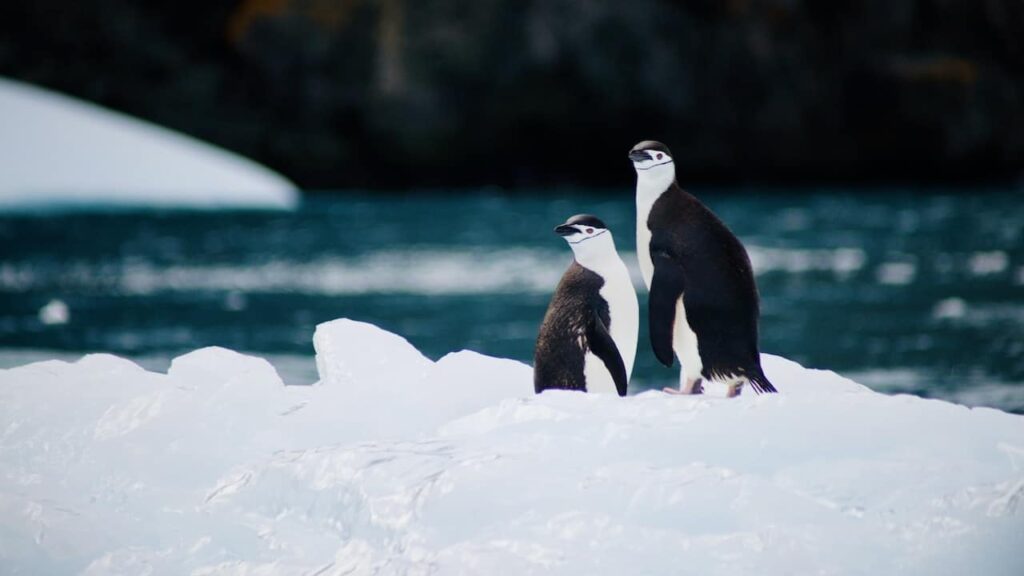
7.1. Landscape and Climate
The Ross Sea Marine Protected Area is a pristine and diverse marine environment that offers a unique opportunity for scientific research and conservation. The area features a variety of habitats, such as ice shelves, polynyas, seamounts, and hydrothermal vents. The area also hosts some of the most productive waters in the Antarctic, due to the upwelling of nutrient-rich currents and the formation of sea ice.
The climate of the area is polar and cold, with an average annual temperature of -20°C and an average annual precipitation of 200 mm. The area has two seasons: summer (October-March) and winter (April-September). The summer season is characterized by long daylight hours, melting sea ice, and increased biological activity. The winter season is marked by long darkness, freezing sea ice, and reduced biological activity.
7.2. Wildlife and Attractions
Being one of the largest national parks in the world, the area is home to millions of polar animals that depend on the sea ice and the food web for their survival. Some of them are penguins, seals, whales, and fish. The area also hosts many endemic and vulnerable species, such as the Antarctic toothfish, the Antarctic silverfish, and the Ross seal. Therefore, the area is a haven for wildlife watchers and photographers who seek to capture the beauty and diversity of the polar fauna.
The Ross Sea Marine Protected Area also has some cultural and historical attractions, such as historic huts, monuments, and museums. The area preserves some traces of Antarctic exploration and discovery that occurred in the past centuries. The area also showcases some examples of Antarctic cooperation and governance that have been established in recent decades.
7.3. Challenges and Threats
The area faces some challenges and threats that could affect its integrity and conservation. Some of them are climate change, fishing, pollution, tourism, and research.
- Climate change is affecting the area’s ecosystem by changing the temperature and salinity of the water, melting the sea ice and glaciers, and altering the food web dynamics.
- Fishing is driven by the demand for Antarctic toothfish, which is a valuable commercial species that is also a key predator in the ecosystem.
- Pollution is caused by human activities such as shipping, waste disposal, oil spills, and noise.
- Tourism is increasing the demand for access and infrastructure in remote areas that can disturb or harm wildlife.
- Research is a positive activity that can help increase knowledge and understanding of the area but it can also pose some risks if it is not done responsibly and ethically.
How to Help Preserving and Protecting the National Parks
You can help preserve and protect the national parks by visiting responsibly and following the park’s rules and regulations. Besides that, with the Ross Sea Marine Protected Area, you can follow the rules and regulations set by the Commission for the Conservation of Antarctic Marine Living Resources (CCAMLR). They are the international body that oversees the management of the area. You can also donate money or time to support the park’s management and conservation efforts. Furthermore, you can raise awareness about the park’s importance and challenges by sharing your experience and knowledge with others.
Those are the largest national parks in the world that are surely bigger than a country. They are all unique and amazing natural areas that deserve your attention and respect. If you want to learn more about it, you can ask me more questions. I hope you enjoyed this information.
Let’s Explore and Protect the Largest National Parks in the World
I hope you enjoyed this article about the largest national parks in the world that are even bigger than a country. You have learned a lot about these amazing and diverse natural areas, such as their size, location, landscape, climate, wildlife, and attractions. You have also learned why they are bigger than a country and which country they are bigger than. Additionally, you have discovered some of the challenges or threats that they face, such as climate change, pollution, poaching, or development. And you have also learned some ways or actions that you can take to help preserve and protect them, such as visiting responsibly, donating money or time, raising awareness, or supporting conservation initiatives.
Now that you know more about these incredible national parks, why not plan a trip to one of them? Surely, you will have an unforgettable experience of exploring and admiring some of the most beautiful and diverse natural wonders on Earth. You will also have an opportunity to contribute to their conservation and support their local communities. You will not regret it.
But before you go, please share this article with your friends or family who might be interested in this topic. You will help us spread the word about these amazing national parks and inspire more people to visit and protect them. You can also sign up for our newsletter or blog to get more articles like this one delivered to your inbox. We would love to hear from you.
Thank you for reading this article and for caring about the largest national parks in the world! Please leave a comment or feedback below and let us know what you think.
The Broad Life introduces to you great, inspirational books for your wanderlust. They aren’t just simple travel, each book recounts the author’s journey to discover and learn many awesome things from new civilizations and places.
> READ MORE: THE BEST TRAVEL BOOKS OF ALL TIME
IF YOU LOVE THIS ARTICLE ABOUT THE LARGEST NATIONAL PARKS IN THE WORLD, “PIN IT” NOW TO SAVE THE CONTENT!
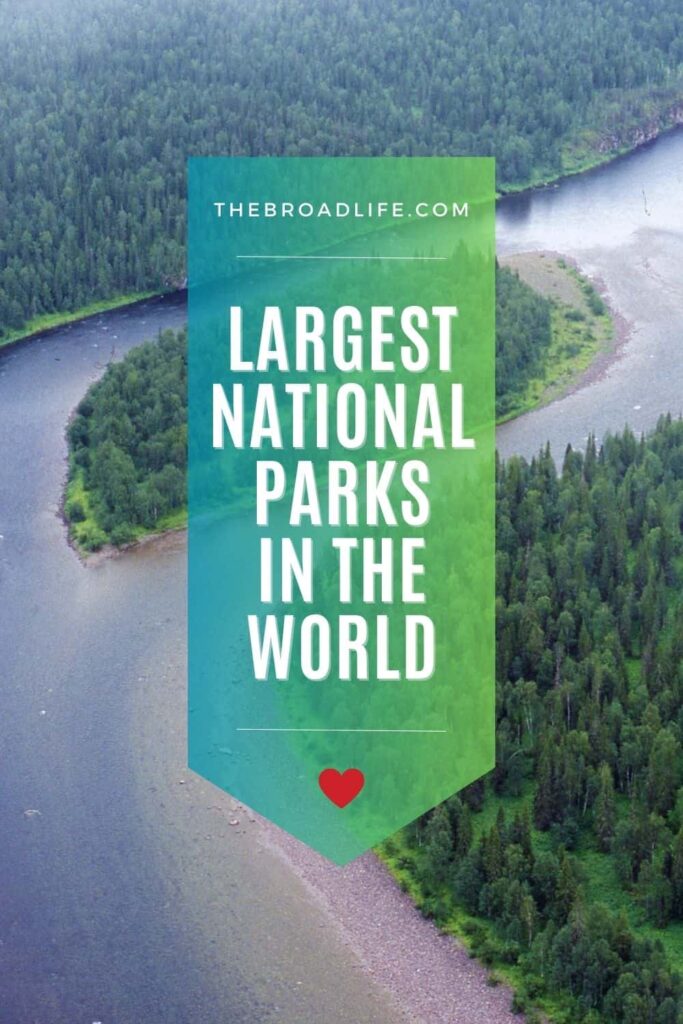
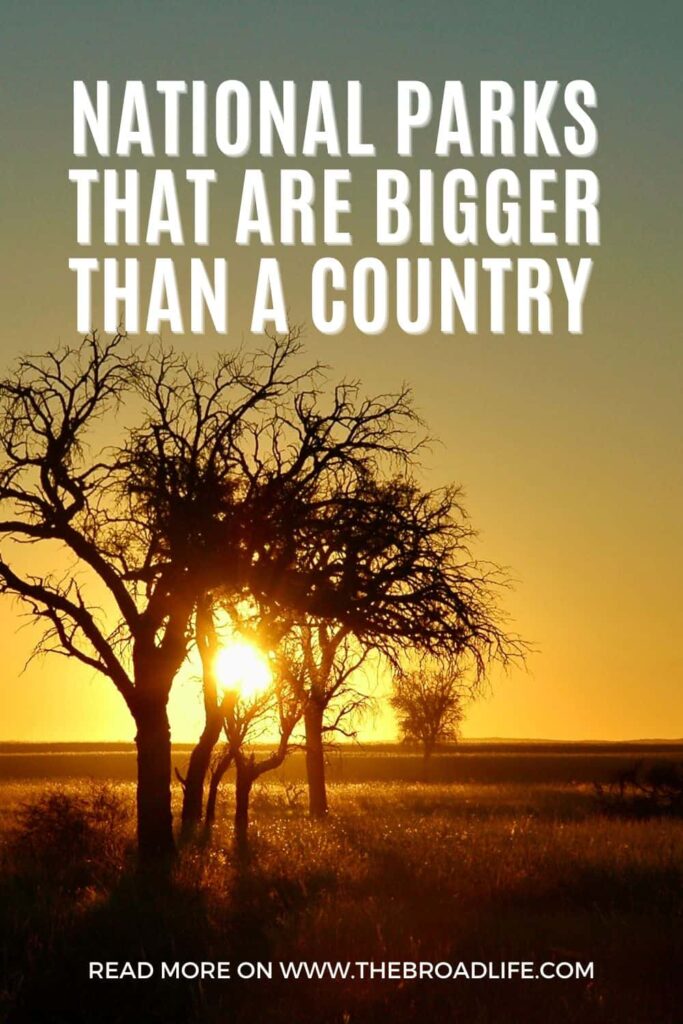
16 Comments
-
Stephanie
Always the best travel ideas on this site. The list of national parks here is amazing and I would love to see all of these, but given the size of each area one could spend days exploring.
-
Stephanie
Oh my gosh, I can’t imagine how big these are! I’ve spent time at Yellowstone, Glacier, and Everglades National Parks and thought those were huge but they didn’t even make the list!
-
Marysa
It is nice to hear how large some of these parks are, especially in times that natural areas are being threatened by development. These are beautiful!
-
Sonia Seivwright
I cant wait to explore these parks. They are huge! oh my goodness.
-
Olga
I didn’t know there were so many big parks. I`m not sure if I`ll visit one of them one day, but I had fun reading your post. Thank you for sharing cool facts.
-
Debbie
Wow – those parks are huge. I didn’t realize how large these places really are. I would love to explore so many on this list!
-
Melanie E
I love that these national parks are so large. It’s important to have large green areas that are overpopulated with people. Nature needs a bit of space too. It must be amazing to go see these parks.
-
Ebony
These national Parks are absolutely beautiful! I’ve never heard of some of these, but can’t wait to visit them one day! Who knew these parks could be so large!
-
rosey
My son went to some of the big national parks out west this summer with his dad. The photos were stunning.
-
Ntensibe Edgar
Nnnniiiccceeeee….it’s good to be a blogger. i would have never known of these parks. Northeast Greenland National Park – North America is one i wanna visit.
-
Fransic verso
These look so cool, love the view and would love to be there. Thank you for sharing!
-
Jennifer Prince
Wow! It’s so amazing how large some of the parks are. No wonder it takes days to explore some of them!
-
Marky Ramone Go
Bucket listing em all. I hope all these nature parks remain untouched and protected for us and future generations to enjoy exploring.




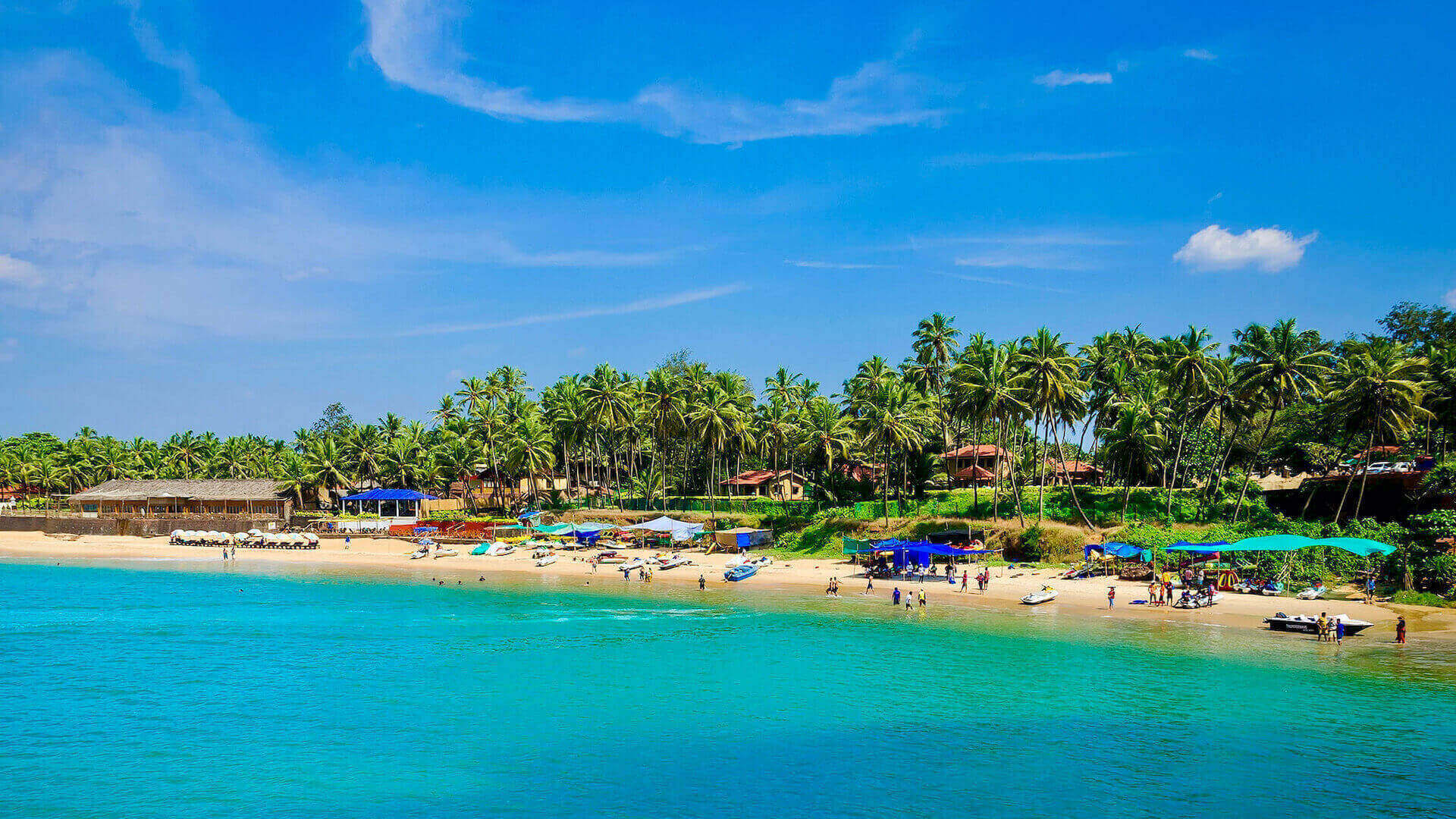

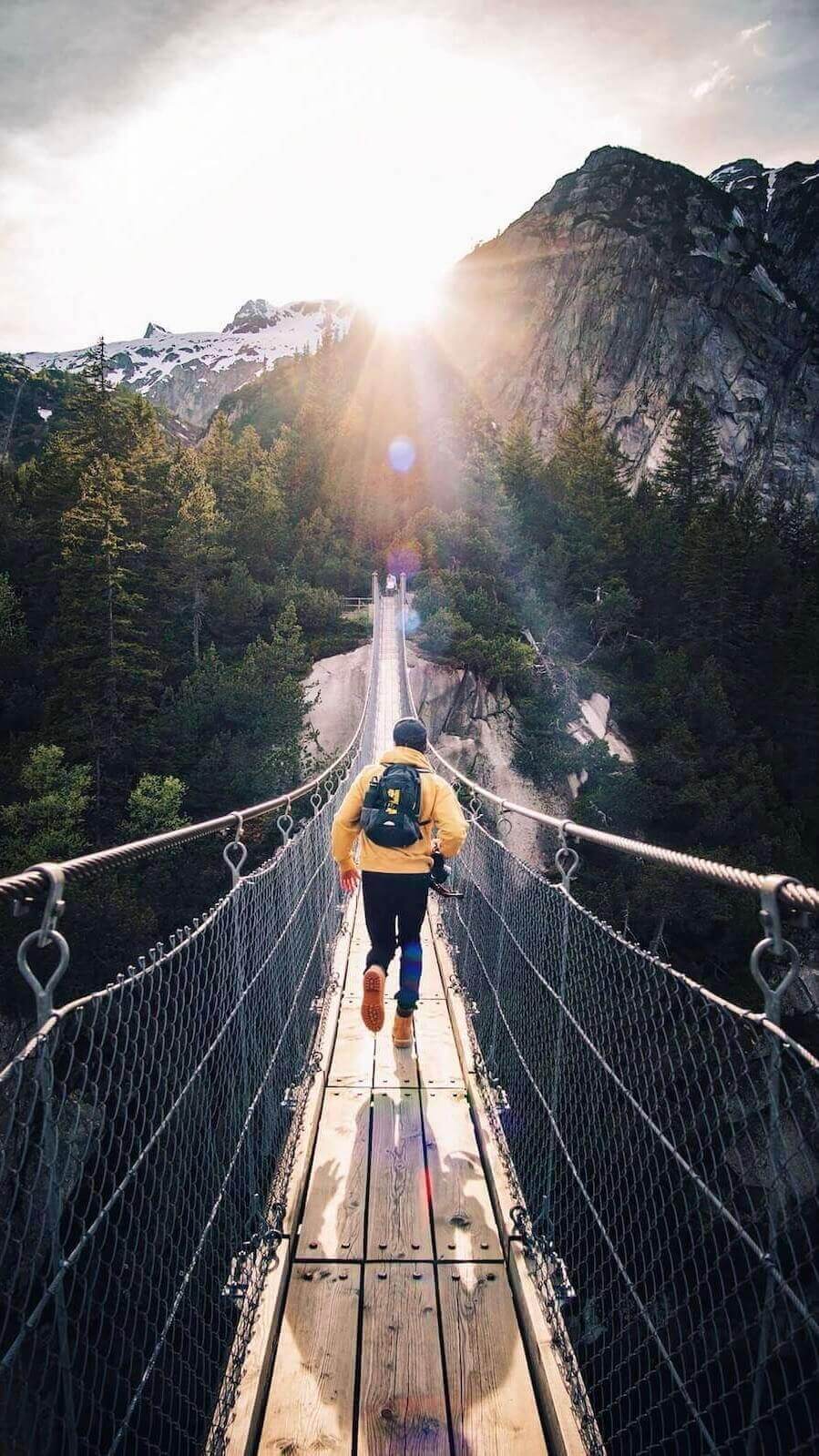
knycx journeying
Oh wow, the scenery, greeneires and wildlife. It’s breathtaking just looking at the pictures, thanks a lot for introducing these places and I would love to explore that myself some day